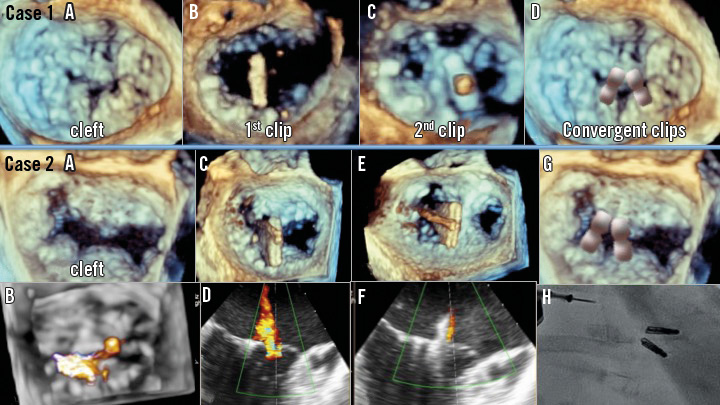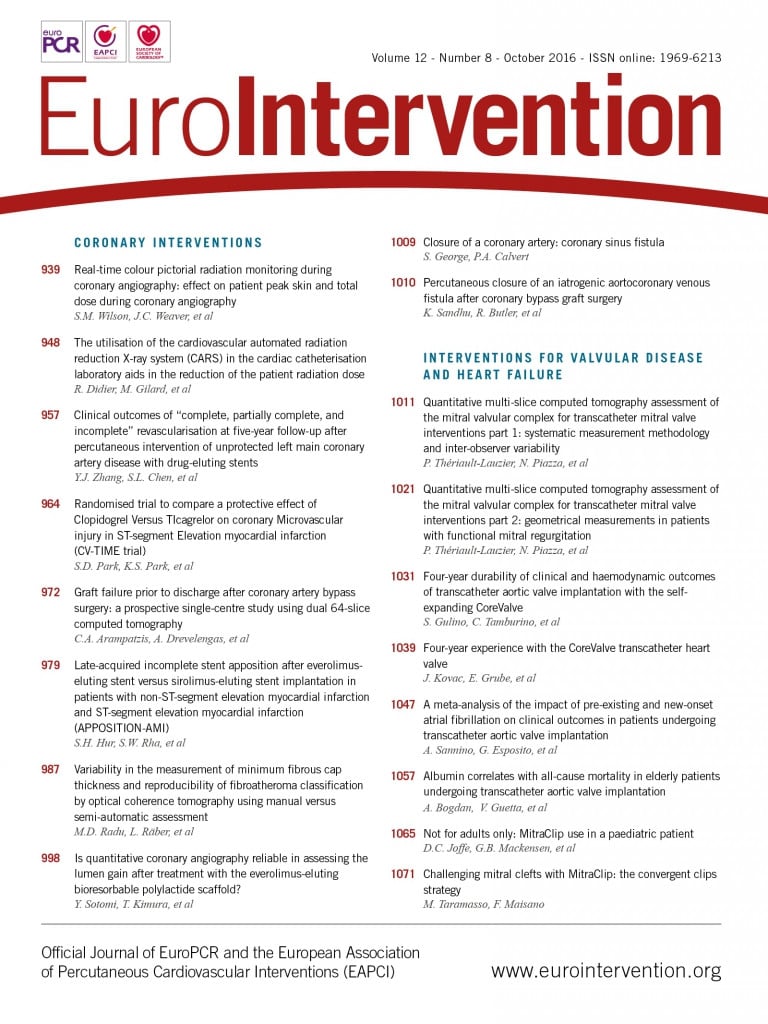

The posterior leaflet of the mitral valve has two indentations that generally divide the leaflet into three scallops. It is not uncommon that abnormal deep, cleft-like indentations are associated with significant mitral regurgitation (MR). Moreover, the presence of cleft-like indentations is a frequent cause of residual MR after MitraClip® (Abbott Vascular, Santa Clara, CA, USA) implantation, mainly in functional MR. In the presence of advanced tethering, the implantation of one clip in the central position may open a cleft-like indentation.
When a significant MR jet originates from a deep indentation, two convergent clips can be implanted on both sides of it. The clips are not implanted parallel to each other, and they are not perpendicular to the coaptation line. The lateral clip is oriented slightly more clockwise than the line of coaptation and the medial one is oriented slightly counterclockwise.
Case 1. A) A cleft-like indentation is visible in the P2 segment of the posterior leaflet on 3D echo. The fist clip is positioned lateral to the cleft (B) and a second convergent clip medially (C). D) Rationale of the “convergent clips” strategy to close the cleft. Case 2. A) A cleft-like indentation in the P1-P2 region, lateral to the regurgitant area (B). After the implantation of a first clip in the central position (C), significant lateral non-eccentric MR is still present due to cleft opening (D). A second clip is implanted laterally, convergent to the first one (E). Minimal residual MR (F & G). Final fluoroscopy shows the non-parallel position of the convergent clips (H).
Conflict of interest statement
F. Maisano is a consultant for, and receives research grants from Abbott Vascular. M. Taramasso has no conflicts of interest to declare.

